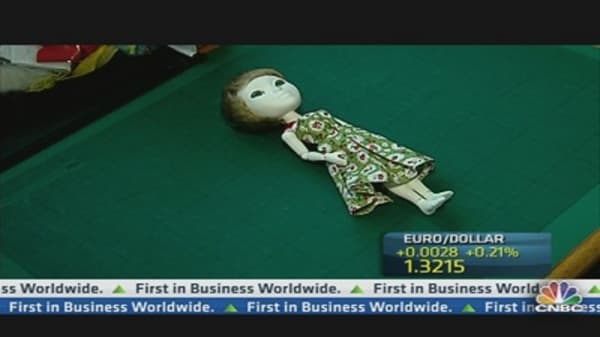The industry is worth about $2.1 billion, and is forecast to grow to $6.5 billion by 2019, Bojesen reported.
Like many technology trends, falling prices have made 3-D printing available to more players. The price for a 3-D business printer has dropped to roughly $15,000 from $100,000, putting one within reach for many smaller companies.
The many applications of 3-D printing, meanwhile, are only beginning to be realized. 3-D printing has been successfully used in the health-care sector to make custom hearing aids and dental fixtures. The technology also is being used to create more complex structures—particularly human tissue. (Read more: How 3-D Printers Are Reshaping Medicine)
3-D printing's applications can also be less serious. Makielab, a London-based gaming and toy company, uses 3-D printing to allow customers to design and create individualized, real-life dolls. Makielab CEO Alice Taylor attended a digital entertainment workshop at the annual New York toy fair in 2010, when the idea struck to merge 3-D printing and toys.
Design Boom Among Small Companies
The ability to fashion individual designs for products is key to why 3-D printing is so potentially disruptive to existing manufacturing models. "It is a big deal, especially for designers," said Sissons of the Work Foundation.
The technology also makes designing more accessible to small entrepreneurs. Prior to 3-D printing, companies took a product idea to a manufacturer and then figured out shipping the product. The new technology allows small firms to bypass those costly middle steps and take a product idea directly to market. "These days you can just start websites, get a 3-D printer, start making it, and start selling it to people," Sissons said.
Consumer 3-D Printing Grows
Beyond small businesses, individual consumers are dipping into the technology. A consumer 3-D printing scene is emerging in New York City. MakerBot in lower Manhattan sells a consumer desktop 3-D printer, the Replicator 2, for $2,199. Store visitors recently created and printed their own holiday ornaments.
There's also Shapeways, a marketplace and community, similar to Amazon, but just for 3-D printing.
— Written by CNBC's Heesun Wee. Follow her on Twitter @heesunwee




